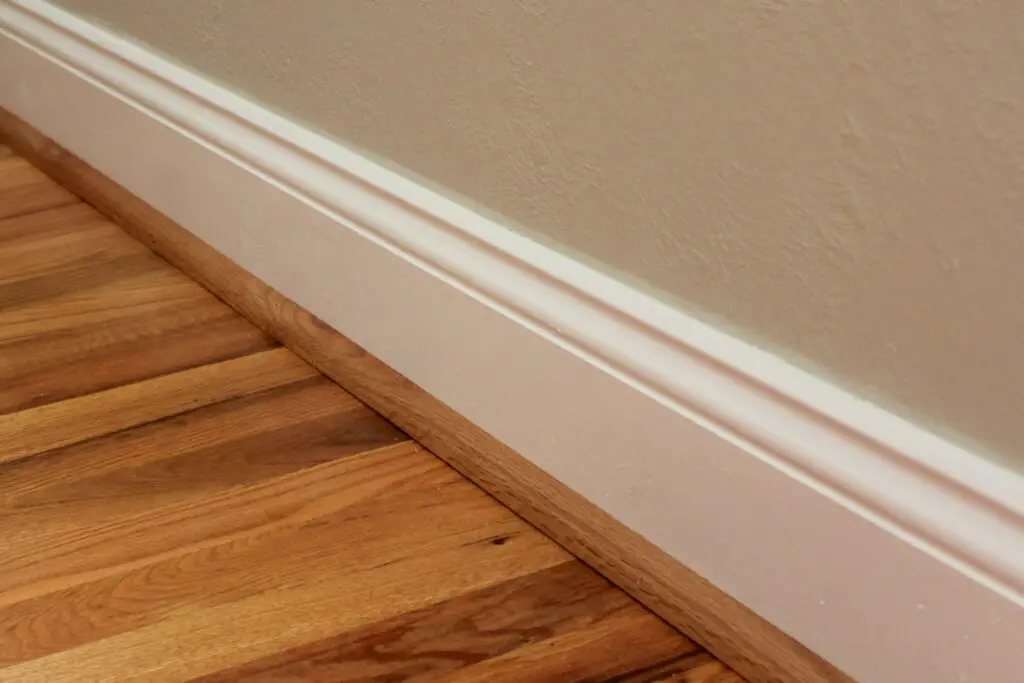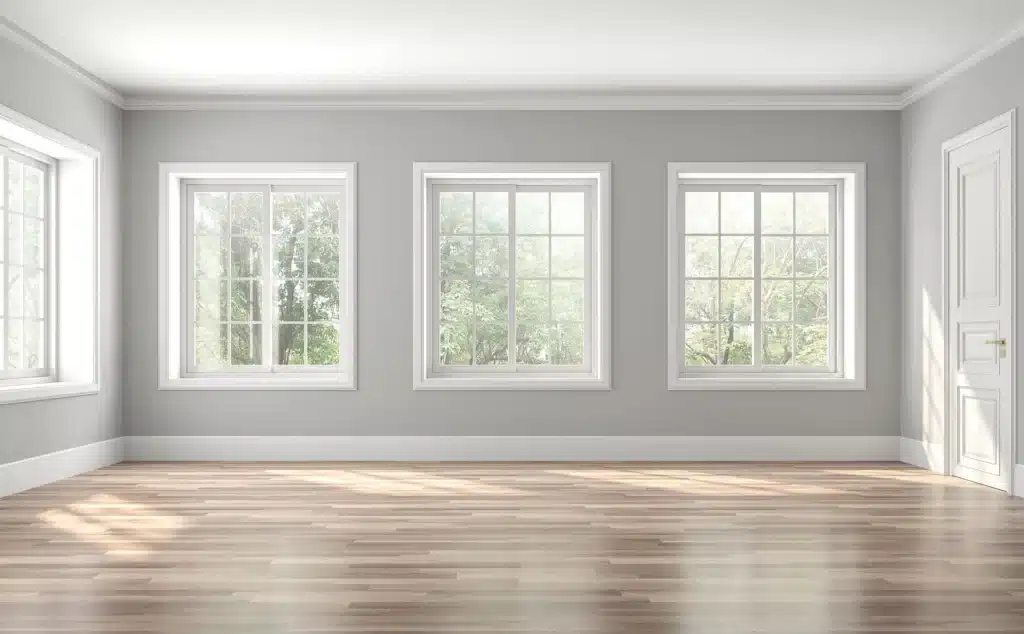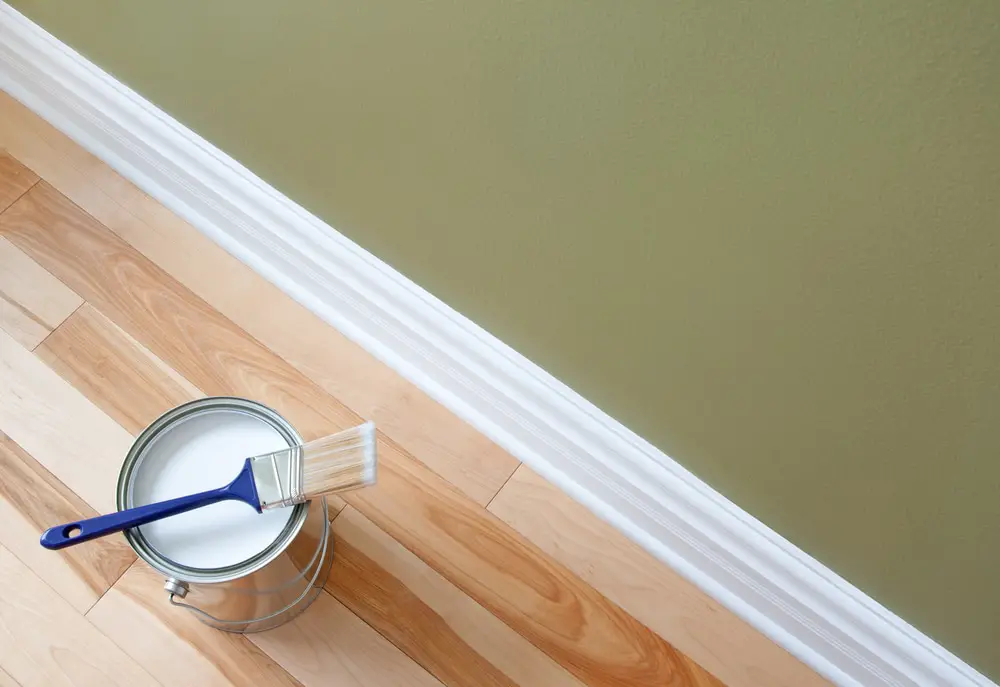What Color To Paint Baseboards
Introduction
What Color To Paint Baseboards: Choosing the right color to paint baseboards can greatly enhance the overall look and feel of a room. Baseboards, also known as skirting boards, are the trim that runs along the bottom of walls, covering the joint between the wall and the floor. While they may seem like a small detail, baseboards play a crucial role in tying together the design elements of a space.
When it comes to selecting a color for your clean baseboards, there are several factors to consider. The first is the overall style and aesthetic of the room. Are you going for a modern, minimalist look or a more traditional, classic feel. The color of your baseboards should complement the existing color scheme and furniture in the room.
Another important consideration is the size of the room. Lighter colors tend to make a space feel larger and more open, while darker colors can create a cozy, intimate atmosphere. If you have a small room, opting for a lighter color for your baseboards can help create the illusion of more space.
Additionally, you should take into account the color of your walls and flooring. If you have light-colored walls and flooring, a contrasting color for your baseboards can add visual interest and create a focal point. On the other hand, if your walls and flooring are already bold or busy, choosing a neutral color for your baseboards can help balance the overall look of the room.

What Colour is best to paint baseboards?
If not: “A clean, neutral white will have a fresh, modern look that pairs well with pretty much any color.” “Just like you would any other color, test your trim paint to make sure you love it in your space and that it looks good with your walls,” Gibbons says.
The appropriate color for baseboards may change the look and feel of a room. Baseboards can match the walls or stand out, depending on the effect. Baseboard colors should be chosen based on the room’s color scheme, style, and personal preferences.
Matching baseboards to walls is a popular choice. This keeps the baseboards looking uniform and blends them into the room. This method works nicely in monochrome or neutral-colored interiors. Using the same hue for walls and baseboards draws attention to furniture and artwork.
choosing the right color
On the other hand, some homeowners prefer to create a contrast between the walls and baseboards. This can be achieved by painting the baseboards in a color that complements or contrasts with the wall color. For example, if the walls are painted in a light shade, using a darker color for the baseboards can create a visually appealing contrast. This approach adds depth and visual interest to the room, making the baseboards stand out as a design element.
Another factor to consider when choosing the color for baseboards is the style of the space. In traditional or formal settings, it is common to paint the baseboards in a classic white or off-white color. This creates a timeless and elegant look that complements the overall aesthetic of the room. In more contemporary or modern spaces, homeowners may opt for bolder or unconventional colors for the baseboards to add a touch of personality and uniqueness to the design.
Should baseboards be lighter or darker than walls?
Your options for wall and trim color combinations go beyond white trim and a colored wall. Painting the trim and woodwork darker than the walls, for example, focuses attention on window and door frames. If you love color, consider painting the trim a contrasting hue that’s equal in intensity to the wall color.
When it comes to choosing the right color for baseboards, there is no one-size-fits-all answer. The decision of whether baseboards should be lighter or darker than walls depends on various factors, including personal preference, the overall design scheme, and the desired effect. Both lighter and darker baseboards can create different visual effects and impact the overall look and feel of a room.
Lighter baseboards can help create a sense of openness and spaciousness in a room. By choosing a lighter color for the baseboards, they can blend in with the walls and create a seamless transition. This can be particularly effective in smaller rooms or spaces with low ceilings, as it can make the room appear larger and more airy. Lighter baseboards can also help draw attention to other design elements in the room, such as furniture or artwork.
Darker baseboards, on the other hand, can add depth and contrast to a room. By choosing a darker color for the baseboards, they can create a visual anchor and provide a sense of grounding. This can be especially effective in larger rooms or spaces with high ceilings, as it can help create a more balanced and cohesive look. Darker baseboards can also add a touch of elegance and sophistication to a room, particularly when paired with lighter-colored walls.
Do you paint your baseboards the same color as your walls?
Painting trim the same color as the wall places the emphasis on texture, color, and architectural elements of the room. Doing so results in a backdrop for your room’s decor that instantly elevates your space and creates a type of visual dimension that can’t be matched by contrasting wall and trim colors.
When it comes to painting baseboards, there are a few different approaches you can take. One common question that arises is whether or not to paint the baseboards the same color as the walls. This decision ultimately depends on the overall look and feel you are trying to achieve in your space. While there is no right or wrong answer, there are a few factors to consider when making this decision.
Paint the baseboards the same color as the walls to unify the room and make it feel bigger.
However, others like painting baseboards a different color than walls. Contrast and visual interest can be added to a room. If you have white walls, painting the baseboards black or navy might add drama. This method is employed in traditional or eclectic design to give a space depth and dimension.
What color should baseboards be if walls are white?
If you don’t like white on white but don’t want to go bold, try white walls with gray trim. There are numerous shades of gray, but the mild one in the space above is really calming and complements the modern furniture.
The color of baseboards for white walls depends on several things. Selecting a baseboard color that matches the white walls can dramatically affect a room’s appearance. Some popular options work well with white walls, but there are no hard and fast rules.
One option is white baseboards. This produces a clean, smooth image because the baseboards match the walls. White baseboards enhance continuity, making a room feel larger and more open. White baseboards can also highlight other interior components like colorful artwork or furnishings.
Another option is to choose a color that contrasts with the white walls. This can create a bold and dramatic look, as the baseboards stand out against the walls. For example, black baseboards can add a touch of sophistication and elegance to a room with white walls. Similarly, dark wood baseboards can create a warm and inviting atmosphere. Contrasting baseboards can also help to define the space and add visual interest.
Do baseboards have to be white?
Only black baseboards anchor a space, while only black crown moulding frames the ceiling and draws your eye up. Doors and casings don’t have to match.
Any interior design needs baseboards to finish the wall-floor junction. Many people choose white baseboards as a classic, but there is no rule. The color of baseboards can significantly affect a room’s look and either match or contrast with the wall color.
White baseboards are popular because they seem clean and sharp. When combined with light-colored walls, white baseboards make a room appear larger and brighter. They also create a neutral background that highlights furniture and artwork. White baseboards are also easy to paint if the room’s wall color or design changes.
Baseboard color
However, there are no strict rules when it comes to baseboard color. Some interior designers and homeowners prefer to use baseboards that match the wall color to create a seamless and cohesive look. This can be particularly effective in rooms with bold or dark-colored walls, as it can create a sense of continuity and prevent the baseboards from standing out too much. On the other hand, contrasting baseboard colors can be used to make a statement and add visual interest to a room.
When choosing a baseboard color, it is important to consider the overall style and mood of the room. For example, in a modern or minimalist space, black or dark-colored baseboards can create a sleek and sophisticated look. In a rustic or farmhouse-style room, natural wood or stained baseboards can enhance the warm and cozy atmosphere. Ultimately, the choice of baseboard color should be based on personal preference and the desired effect for the room.
When it comes to popular colors for baseboards, there are a few options that tend to be widely used and well-received. One popular choice is white, as it provides a clean and classic look that can easily complement any room’s decor. White baseboards also have the advantage of making a room appear brighter and more spacious, which can be especially beneficial in smaller spaces.
Are there any specific color recommendations for baseboards that would complement the room’s overall color scheme?
There are several tips for choosing a baseboard color that matches the room’s decor. Start with a color a shade or two lighter or darker than your wall color. This will give the room depth and dimension with a subtle contrast. Baseboards in white, cream, or beige are safe and adaptable, complementing any color scheme.
Another alternative is to match the baseboard to the room trim. This unifies the room, especially if the trim color is also used in door frames or window casings. A contrasting baseboard color that compliments the room’s prevailing color can create a powerful statement. If your space is all blues and greens, try a rich brown or deep crimson baseboard.
Are there any color trends for baseboards that I should consider?
When it comes to color trends for baseboards, there are a few options that are currently popular in interior design. One trend is to paint the baseboards in a contrasting color to create a bold and modern look. For example, if your walls are a light gray, you could paint the baseboards in a dark charcoal color to create a striking contrast. This can add depth and visual interest to the room.
Another trend is to match the baseboard color to the trim color throughout the rest of the room. This creates a cohesive and seamless look, making the baseboards blend in with the rest of the trim and molding. This can be particularly effective in rooms with intricate trim work, as it allows the details to shine without drawing attention to the baseboards.
How can I choose a baseboard color that will make the room appear larger or smaller?
When it comes to choosing a baseboard color that can make a room appear larger or smaller, there are a few key factors to consider. First, it’s important to understand that lighter colors tend to create an illusion of space and can make a room feel larger. On the other hand, darker colors can make a room feel more cozy and intimate, but they can also make it appear smaller.
If you want to make a small room appear larger, opt for a baseboard color that is lighter than the walls. This contrast will create a sense of depth and make the walls visually recede, giving the illusion of more space. Lighter shades of white, cream, or beige are popular choices for baseboards in this case.
Conversely, if you want to make a large room feel more intimate or cozy, consider choosing a baseboard color that is darker than the walls. This will create a sense of enclosure and make the room feel more inviting. Darker shades of brown, gray, or even black can be used to achieve this effect. However, it’s important to note that using dark colors in a small room can make it feel even smaller, so it’s best to stick with lighter shades in those cases.
Are there any color combinations for baseboards and walls that are particularly visually appealing?
When it comes to choosing color combinations for baseboards and walls, there are several options that can create a visually appealing look in your room. One popular choice is to use a contrasting color scheme, where the baseboards are a different color than the walls. This can create a bold and eye-catching effect, especially when using dark baseboards against light-colored walls or vice versa. This contrast can help define the architectural features of the room and add visual interest.
Another option is to go for a monochromatic color scheme, where the baseboards and walls are in the same color family but different shades. This can create a more subtle and cohesive look, especially if you want to create a sense of continuity in the room. For example, if you have light gray walls, you can choose a slightly darker shade of gray for the baseboards. This can help create a harmonious and elegant look.

Conclusion
Choosing the right color to paint baseboards can greatly enhance the overall look and feel of a room. It is important to consider various factors such as the room’s color scheme, the style of the baseboards, and the desired effect before making a decision. By carefully selecting the right color, homeowners can create a cohesive and visually appealing space.
One of the key considerations when choosing a paint color for baseboards is the room’s color scheme. The baseboards should complement the walls and other elements in the room. For example, if the walls are painted a light color, such as white or pastel, a darker baseboard color can create a striking contrast. On the other hand, if the walls are already bold or vibrant, a neutral or lighter baseboard color can help balance the overall look. By considering the existing color scheme, homeowners can ensure that the baseboard color enhances the room’s aesthetic appeal.
The style of the baseboards is another important factor to consider when selecting a color. Different baseboard styles can have different effects on the overall look of a room. For example, a traditional or ornate baseboard style may benefit from a darker color, as it can add depth and richness to the space. On the other hand, a modern or minimalist baseboard style may look best with a lighter or neutral color, as it can create a clean and streamlined look. By considering the style of the baseboards, homeowners can choose a color that complements the overall design of the room.








